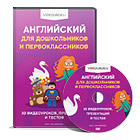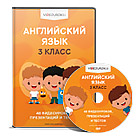Заболевание. Диагностика. Уход за больными.

Список вопросов теста
Вопрос 1
Read the descriptions below and match them to the names of the illnesses:
1) influenza
2) varicella
3) infectious parotitis
4) rubeola
Варианты ответов
- An infectious disease of the upper respiratory tract with fever and muscular aches, which is transmitted by a virus and can occur in epidemics
- An infectious disease of children, caused by a herpes virus, and characterised by fever and red spots which turn to itchy blisters.
- An infectious disease of children, with fever and swellings in the salivary glands, caused by a paramyxovirus.
- An infectious disease of children where the body is covered with a red rash. It can weaken the body's resistance to other disease, especially bronchitis and ear infections. If caught by an adult it can be very serious.
Вопрос 2
Many illnesses also have informal names. Match the informal and formal names listed below.
INFORMAL
1. Chickenpox is the same as
2. A cold is the same as
3. The flu is the same as
4. German measles is the same as
5. Hay fever is the same as
6. Measles is the same as
7. Mumps is the same as
8. Whooping cough is the same as
Варианты ответов
- varicella
- coryza
- influenza
- rubella
- allergic rhinitis
- rubeola
- infectious parotitis
- pertussis
Вопрос 3
Complete these six conversations between doctors and patients by writing in the name of the illness.
- How are you today?
- Oh, not very well. I've got a cough and a terrible cold.
- Do you have a fever?
- Umm, yes I do.
- It's probably a touch of ……………………
Варианты ответов
- chickenpox/varicella
- flu/influenza
- whooping cough/pertussis
Вопрос 4
Read the description which follow, using your dictionary as and when necessary. What is the disease or illness being described?
An infectious disease in which infected lumps form in the tissue. Its commonest form is infection of the lungs, causing patients to lose weight, cough blood and have a fever. It is caught by breathing in germs or by eating contaminated food, especially unpasteurised milk.
Варианты ответов
- epilepsy
- cataracts
- tuberculesis
Вопрос 5
Read the description which follow, using your dictionary as and when necessary. What is the disease or illness being described?
A serious, infectious disease of children. Its first symptoms are a sore throat, followed by a slight fever, rapid pulse and swelling of the glands in the neck. A fibrous growth like a membrane forms in the throat and can close the air passages. The disease is often fatal, either because the patient is asphyxiated or because the heart becomes fatally weakened.
Варианты ответов
- diphtheria
- mumps
- measles
Вопрос 6
Test your medical abbreviations. What do the following stand for? Check the ones you don't know in the dictionary.
1 AIDS
2 CHD
3 D&V
4 GP
5 TB
6 WHO
7 BP
Варианты ответов
- Acquired Immunodeficiency Syndrome
- Coronary Heart Disease
- Diarrhoea & Vomiting
- General Practitioner
- Tuberculosis
- World Health Organization
- Blood preasure
Вопрос 7
What methods of transmission of hepatitis A and E do you know?
Варианты ответов
- blood
- fecal-oral
- unprotected sex
Вопрос 8
What methods of transmission of hepatitis B, C, D and E do you know?
Варианты ответов
- unprotected sex, unprotected sex
- blood, from mother to child
- fecal-oral
Вопрос 9
Establish a correspondence between the disease and the day of struggle against it:
1. World Cancer Day
2. World aids day
3. World Tuberculosis Day
Варианты ответов
- The 4th of February
- The 1st of December
- The 24th of March
Вопрос 10
What type of anesthesia does intravenous anesthesia refer to?
Варианты ответов
- local
- general
Получите комплекты видеоуроков + онлайн версии
 0
0 425
425 Нравится
0
Нравится
0

 Создать тест
Создать тест Вход
Вход








